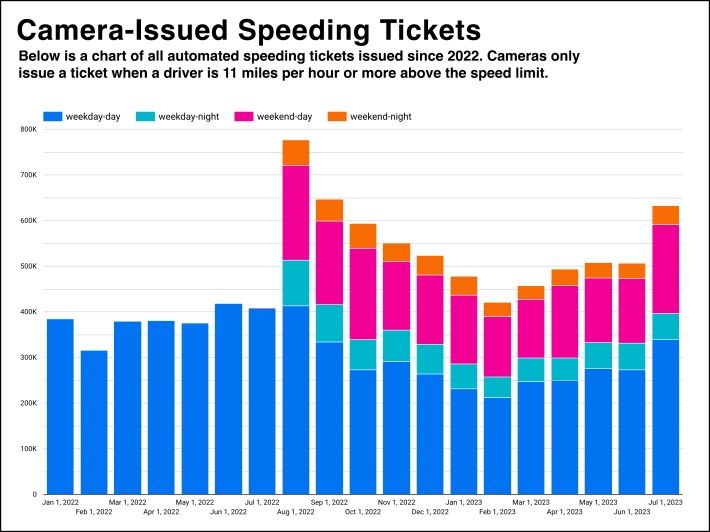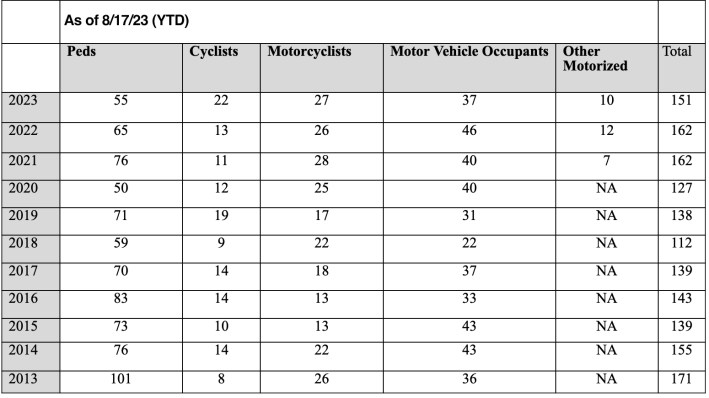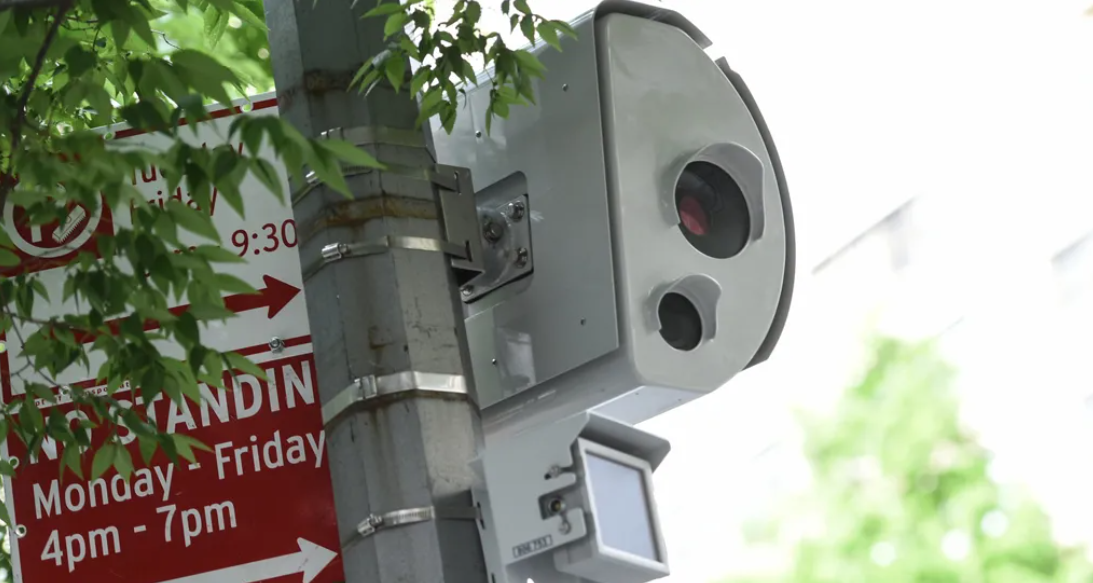New York City's rollout of 24/7 speed camera enforcement last year is yielding results, with violations down 30 percent on camera-enforcement corridors, officials said on Monday.
Streetsblog previously reported that the initial months of the all-day-every-day program had seen a brief spike in violations, followed by a precipitous decline. The drop reflects the cameras doing their job by discouraging speeding among drivers, about 80 percent of whom don't get a second ticket.
“Speeding happens most often on nights and weekends, and expanded enforcement has been a highly effective tool to keep New Yorkers safe," Department of Transportation Commissioner Ydanis Rodriguez said in a statement.
Until 2022, state law only allowed the cameras — which are installed in school zones — to operate on weekdays between 10 a.m. to 6 p.m., leaving speed enforcement during the most dangerous hours on the road entirely to NYPD cops.
The shift to around-the-clock automated enforcement since Aug. 1, 2022 has led to significant reductions in speeding — including 96 percent on Manhattan's Houston Street, 74 percent on North Conduit Boulevard near JFK Airport, and 68 percent on the Bronx's treacherous Bruckner Boulevard, DOT said.
Those drops in speeding violations flies in the face of "cash grab" complaints from speed camera detractors like "The Wire" creator and recidivist speeder David Simon, who spent several days on Twitter earlier this month complaining about a school zone speed ticket he picked up around 4 a.m. on Delancey Street.
Speeding is deadly, and the chances of being killed by a driver increase with driver speed. Speed was a reported factor in nearly one-third of deadly crashes in the U.S. in 2021, according to the Federal Highway Administration.

Cameras went 24/7 last year in part in response to the increased speeding and traffic deaths since the start of the Covid pandemic. Traffic injuries also dropped at a number of high-crash locations with 24/7 camera enforcement, according to the Department of Transportation — by 45 percent on Tremont Avenue in the Bronx, 33 percent on Kings Highway in Brooklyn, 16 percent on Queens Boulevard in Queens and 19 percent on Staten Island's Hylan Boulevard, contradicting some local complaints that the roadway was previously safe.
Automated cameras issued 3,726,081 speeding tickets year-to-date as of July 3 — compared to just 67,144 issued by cops over the same period, according to publicly available data.
Overall traffic deaths are down in 2023 compared to 2022, though not among cyclists and motorcyclists, according to the DOT's latest figures, complete through Aug. 17.

Injuries, however, have increased 2.2 percent this year versus the same period last year, according to NYPD. Cyclist injuries are on-pace for an all-time high. The continued carnage explains why speed camera advocates from Families for Safe Streets have turned their attention to pushing state lawmakers to give the city the ability to set its own speed limits, though that move was opposed by some outer-borough drivers who wish to speed without accountability, and lawmakers such as Assembly Speaker Carl Heastie.
Streetsblog found that a 30 mile-per-hour roadway in Heastie's district — ironically, E. Gun Hill Road, one which Heastie has a district office — was one of the most dangerous such roadways in town.





